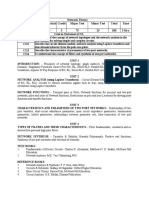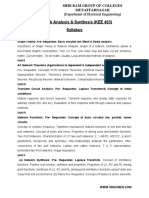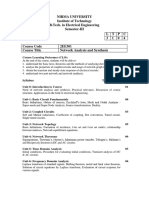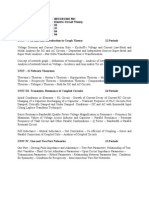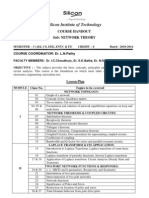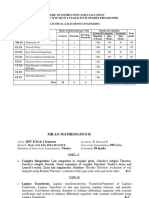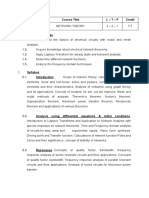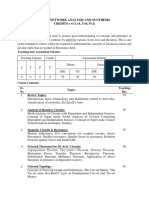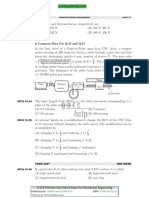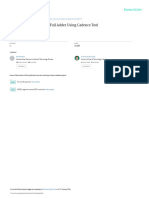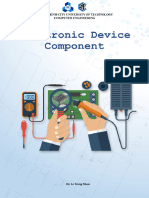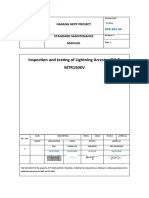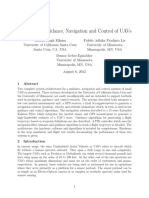0% found this document useful (0 votes)
52 views8 pagesFEE322 Lecture 1 - Introduction
This document provides an introduction and overview of the FEE322 - E.C.T IIB course taught by Prof. H A Ouma in March 2021. The course objectives are to continue electrical circuit analysis theory from the previous course. Over 13 weeks, topics will include two-port networks, transmission lines, and network synthesis. Assessment will be based on a final exam worth 70% and two midterm exams plus regular quizzes worth 30%. Students are instructed to use Google Classroom and Meet for online materials and sessions.
Uploaded by
ali aziadCopyright
© © All Rights Reserved
We take content rights seriously. If you suspect this is your content, claim it here.
Available Formats
Download as PDF, TXT or read online on Scribd
0% found this document useful (0 votes)
52 views8 pagesFEE322 Lecture 1 - Introduction
This document provides an introduction and overview of the FEE322 - E.C.T IIB course taught by Prof. H A Ouma in March 2021. The course objectives are to continue electrical circuit analysis theory from the previous course. Over 13 weeks, topics will include two-port networks, transmission lines, and network synthesis. Assessment will be based on a final exam worth 70% and two midterm exams plus regular quizzes worth 30%. Students are instructed to use Google Classroom and Meet for online materials and sessions.
Uploaded by
ali aziadCopyright
© © All Rights Reserved
We take content rights seriously. If you suspect this is your content, claim it here.
Available Formats
Download as PDF, TXT or read online on Scribd
/ 8
